The Rumble In The Jungle
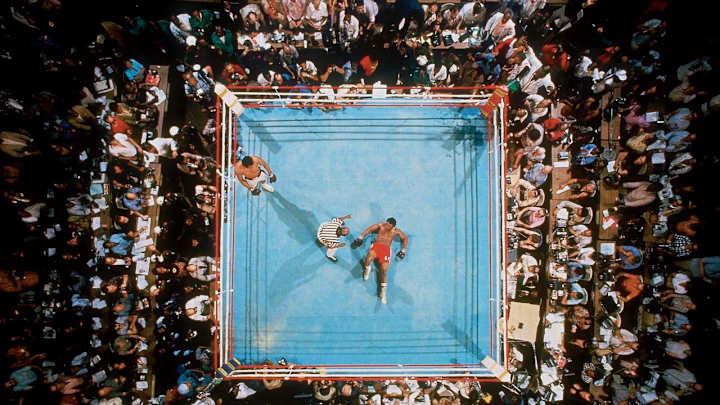
The Rumble In The Jungle

All through his training Muhammad Ali had promised the fancy footwork that would elude George Foreman's power, but he had a secret plan that stunned them all—and especially the champion.
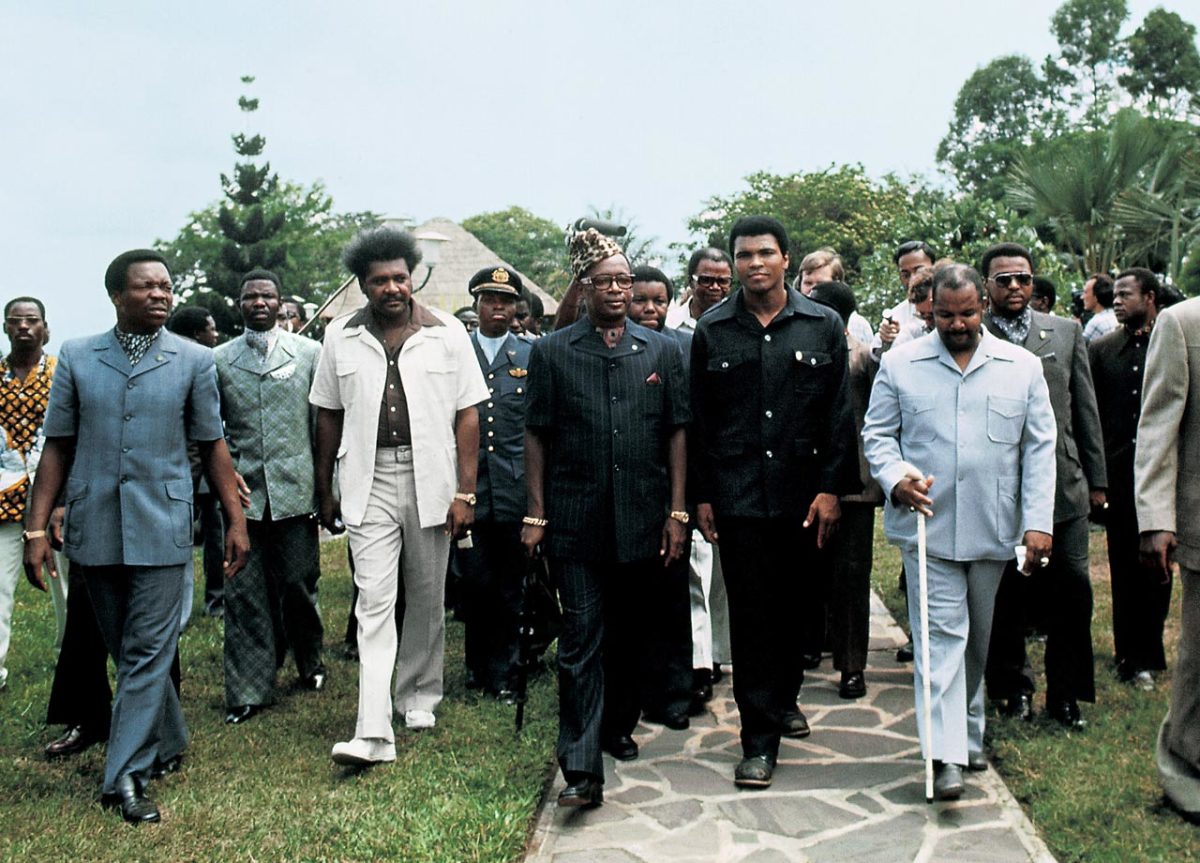
Muhammad Ali spent much of the summer of 1974 training in Zaire, where President Mobutu Sese Seko asked the fight be held, hoping to reap the benefits of the fight's publicity.
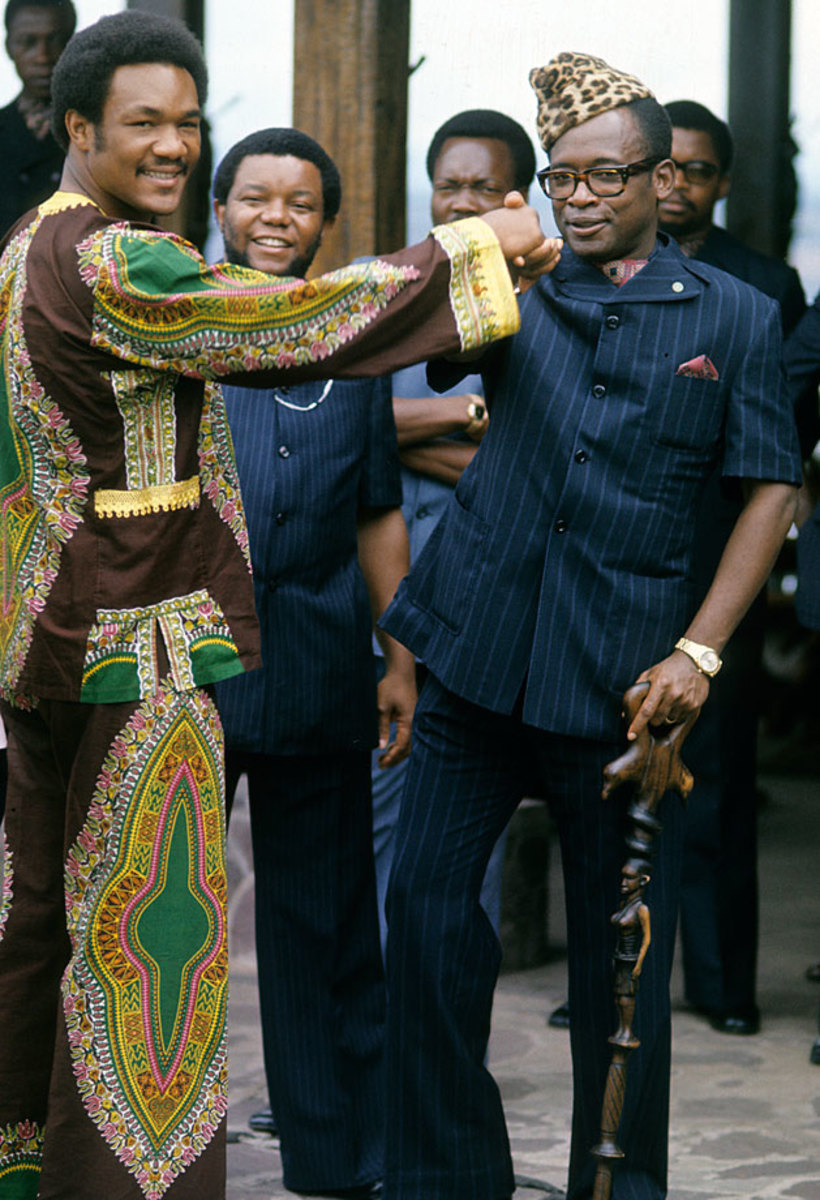
George Foreman, greeted by President Mobutu Sese Seko, also spent most of the summer training in Zaire to adjust to the climate.
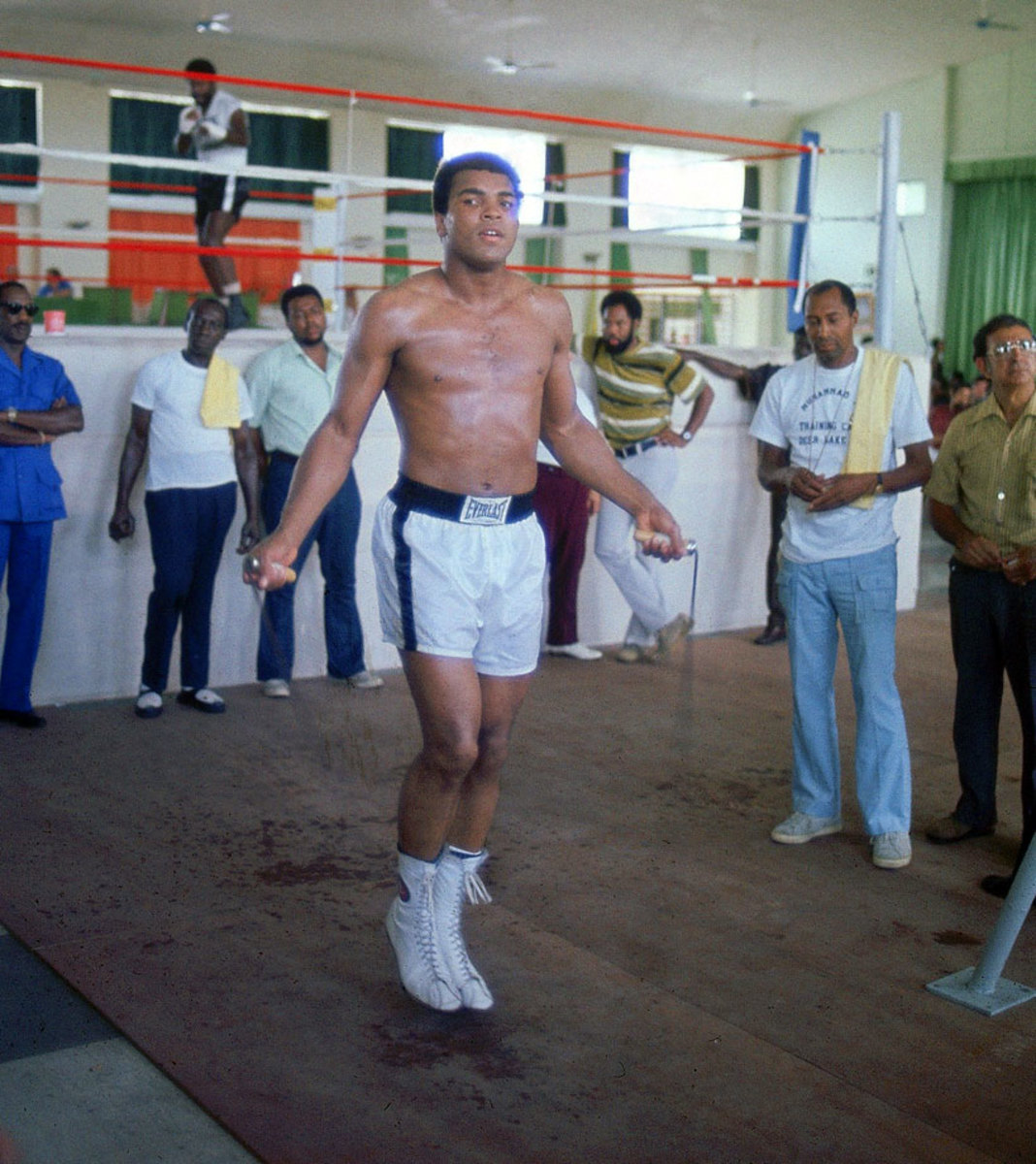
Muhammad Ali jumps rope while training at the Salle de Congres in the presidential complex outside of Kinshasa, Zaire.
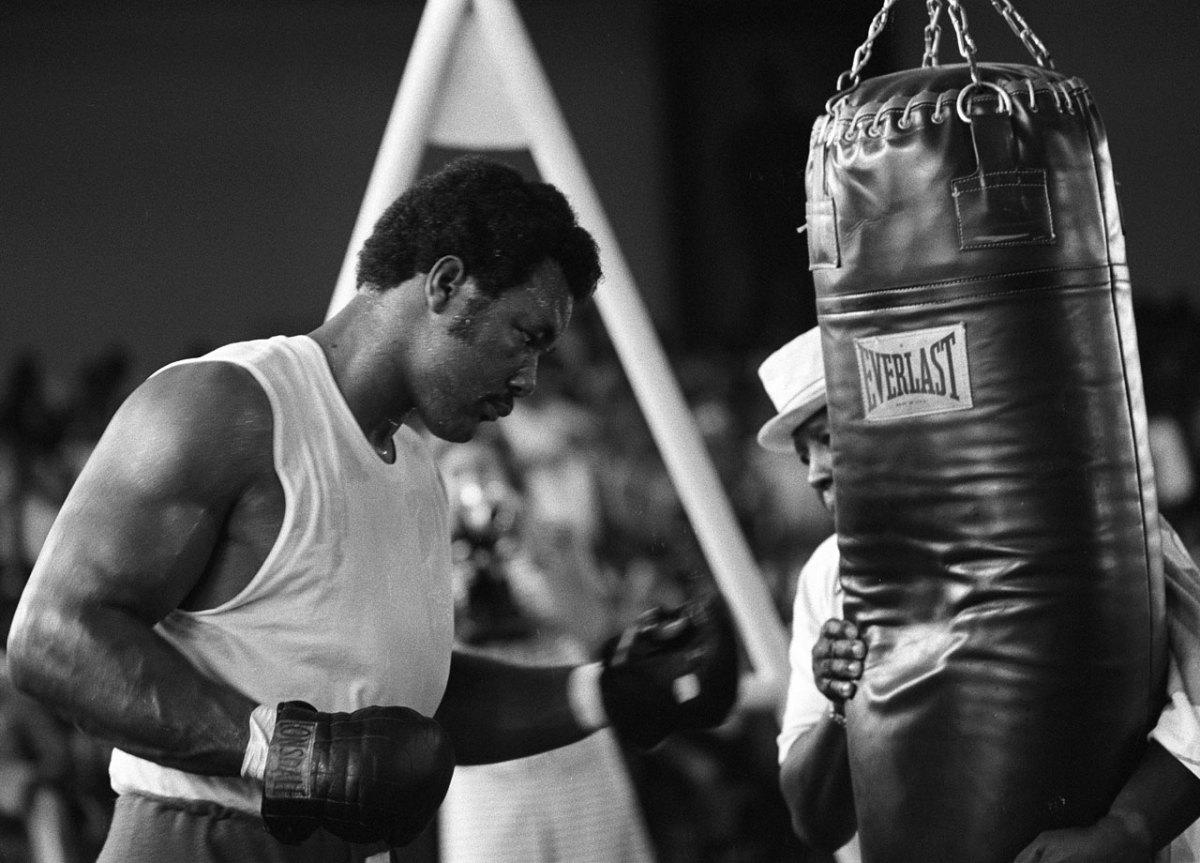
George Foreman hits a heavy bag while training at the Salle de Congres in the presidential complex outside of Kinshasa, Zaire.
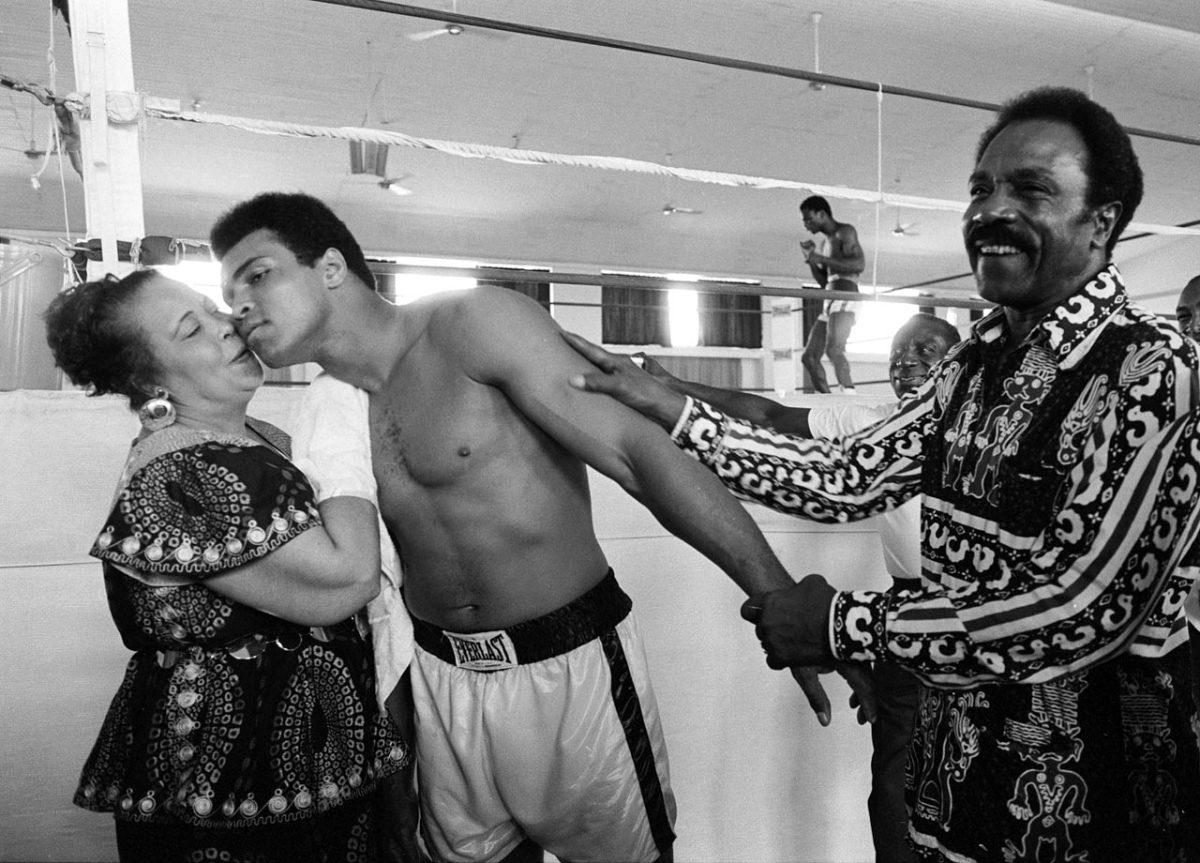
Muhammad Ali kisses his mother, Odessa Clay, alongside his father, Cassius Clay Sr., while training.
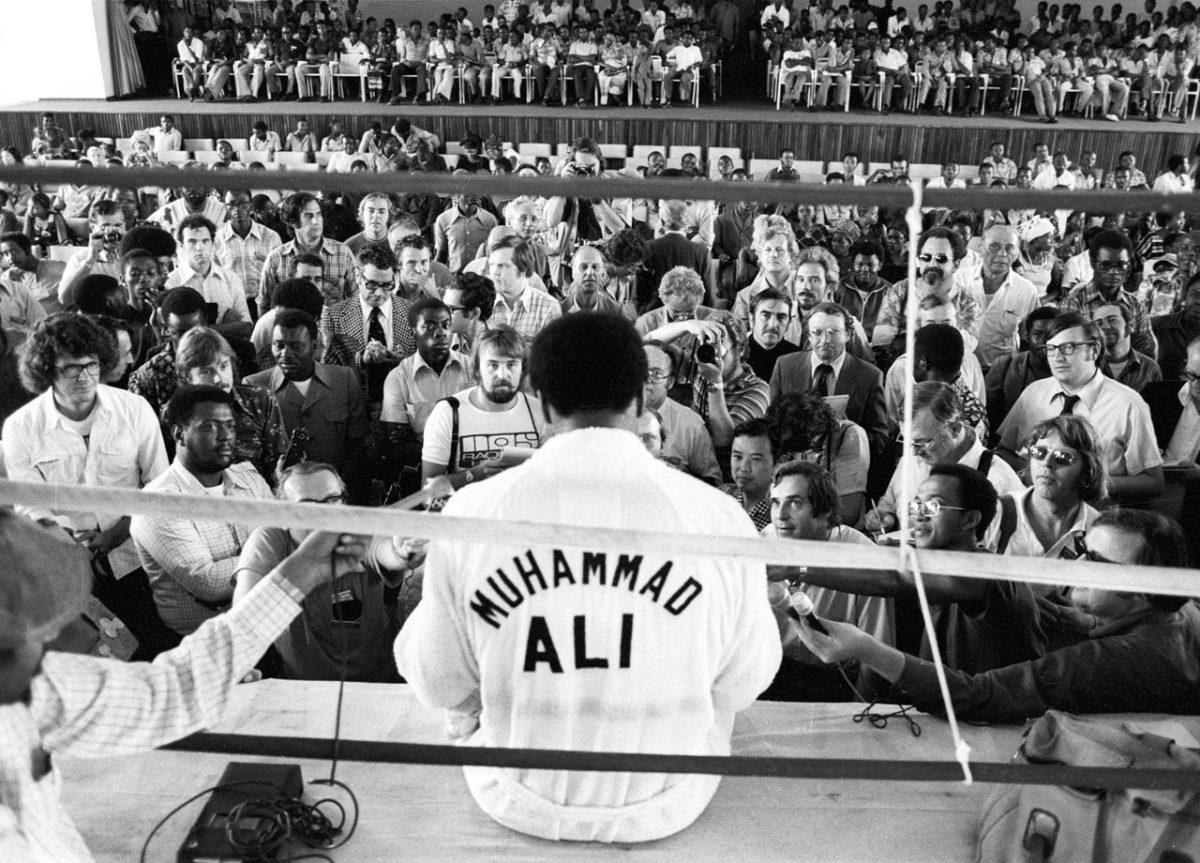
Muhammad Ali used his extended time in Zaire—the bout was postponed after George Foreman suffered a cut on his head during training—to open up to media.
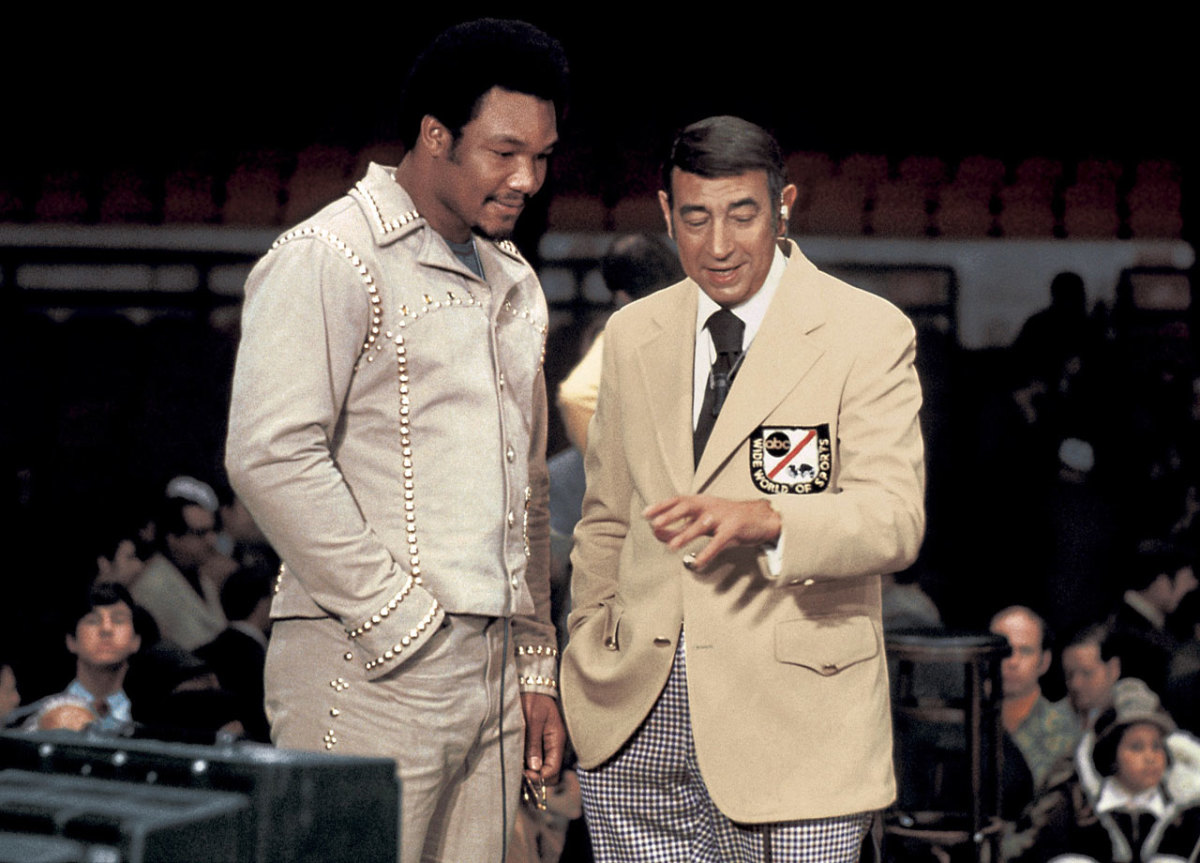
George Foreman, who owned a flawless 40-0 record with 37 KOs, was a far-and-away favorite, even in the eyes of Muhammad Ali's longtime supporter, Howard Cosell.
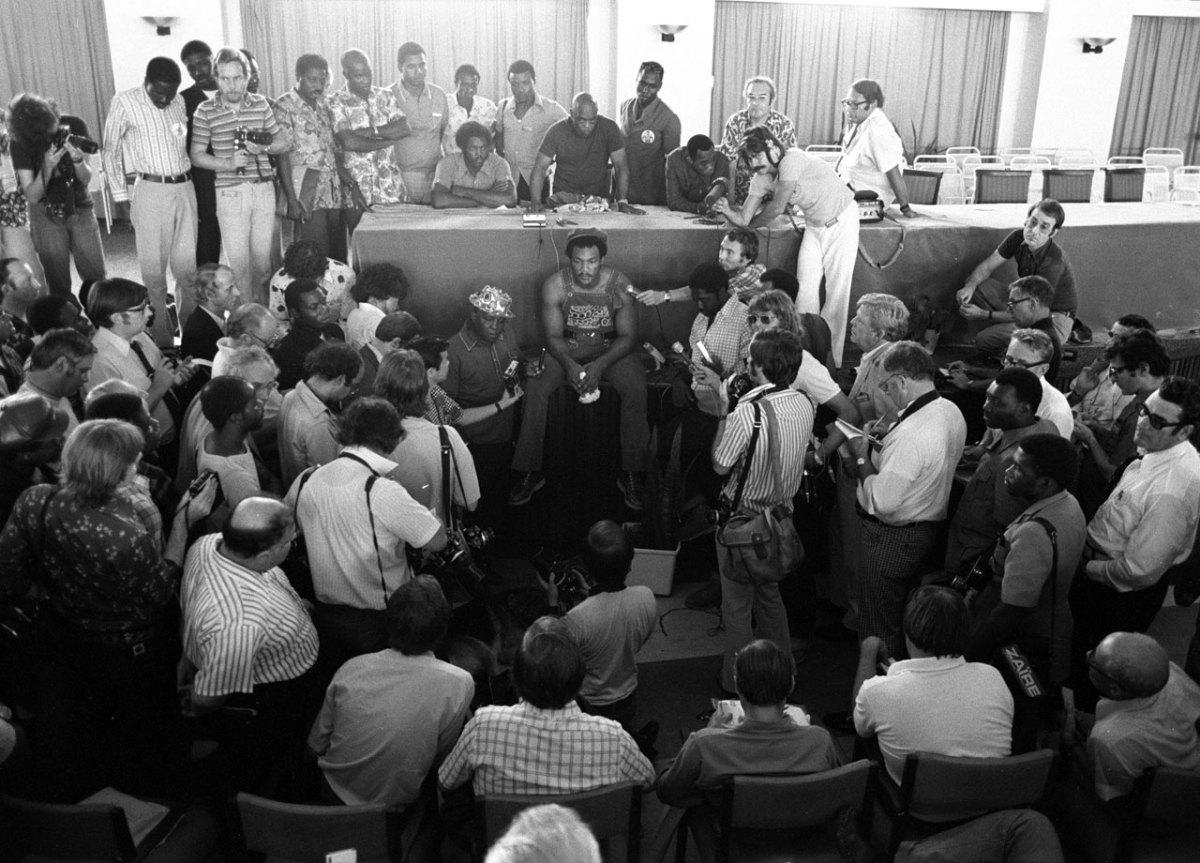
While Muhammad Ali acquired two losses in his four bouts with Joe Frazier and Ken Norton, George Foreman had defeated both: Norton by KO in his fight prior to "Rumble in the Jungle," and Frazier by TKO on Jan. 22, 1973. Foreman was also six years removed from winning an Olympic gold medal.
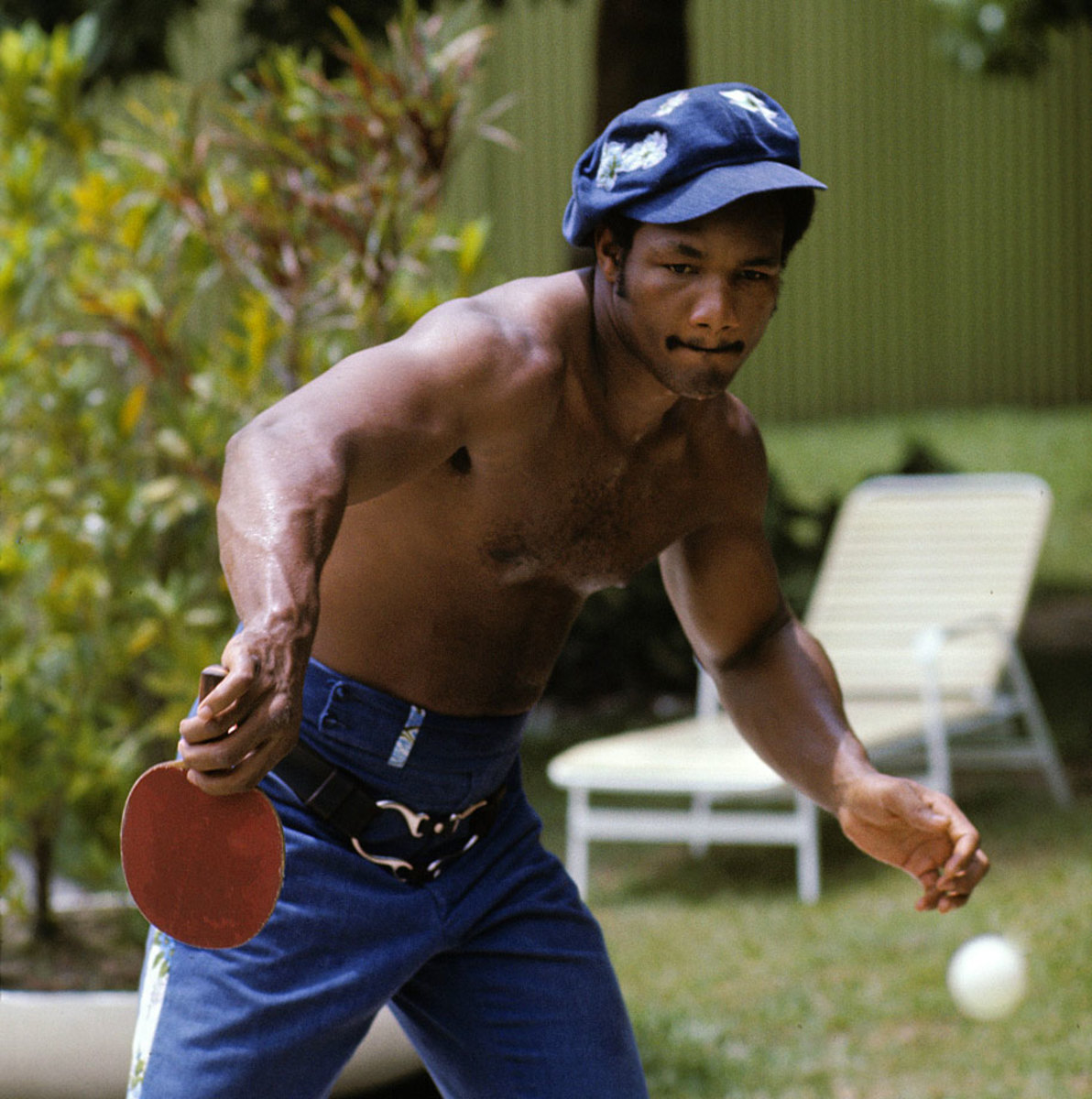
George Foreman plays ping pong in the days leading up to the fight.
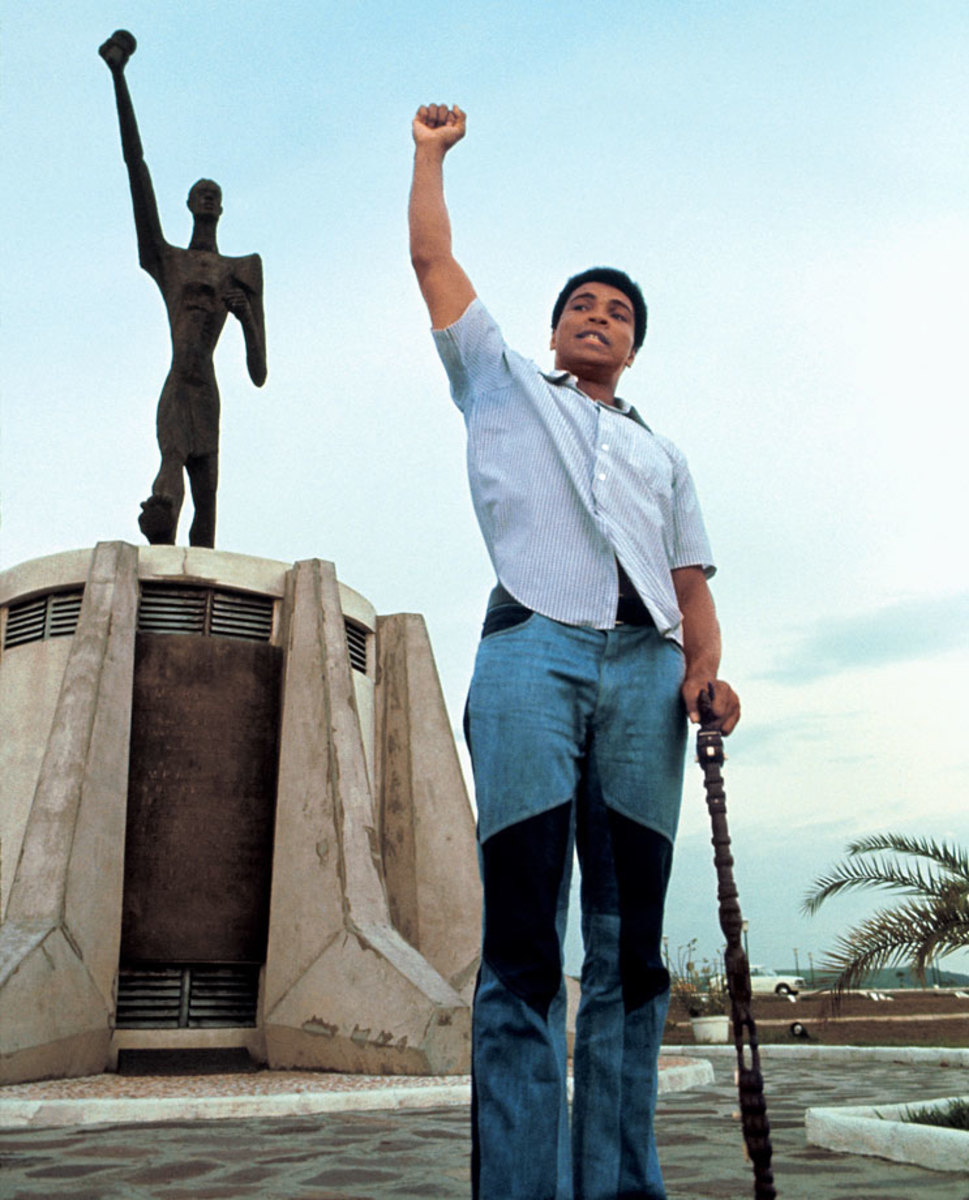
Muhammad Ali poses in front of the Le Militant statue at the presidential complex that was the site of his January bout with George Foreman.
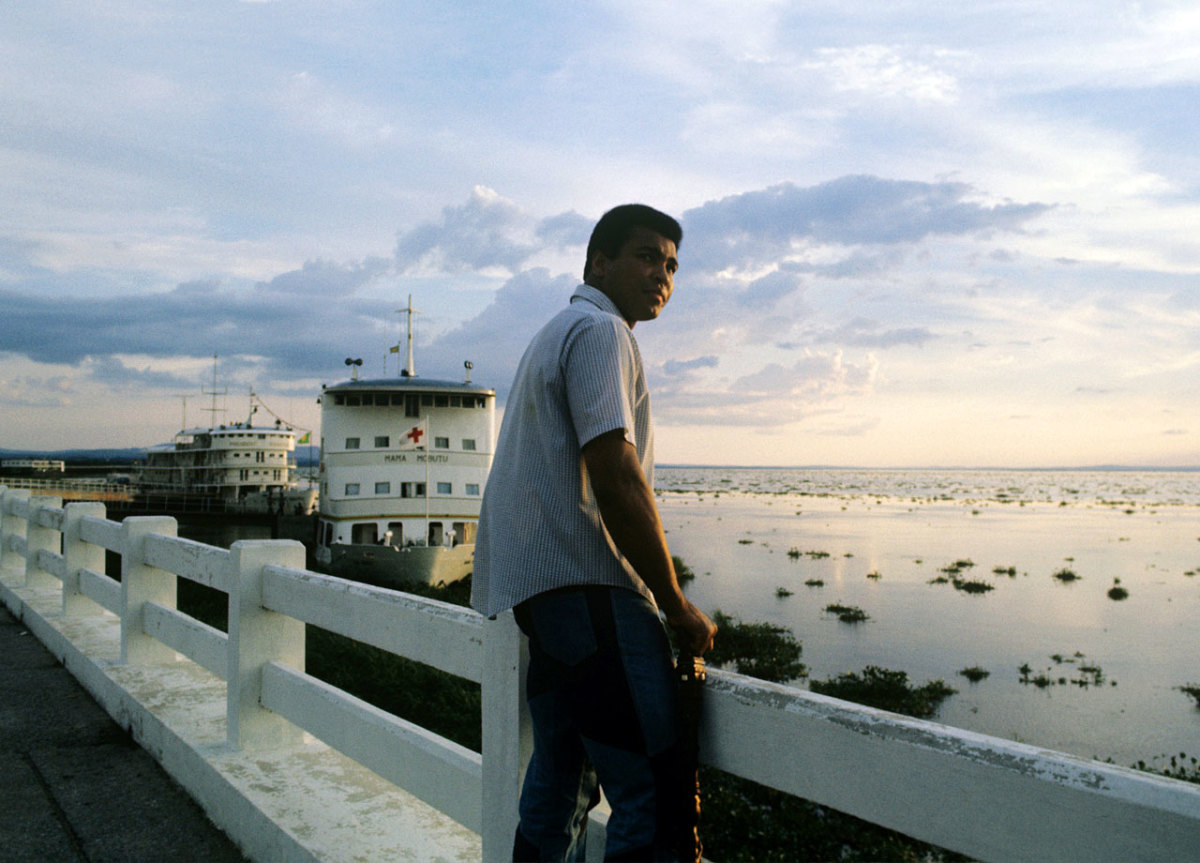
Muhammad Ali stands against the railing on the River Zaire watching the sunset four days before the Rumble in the Jungle.
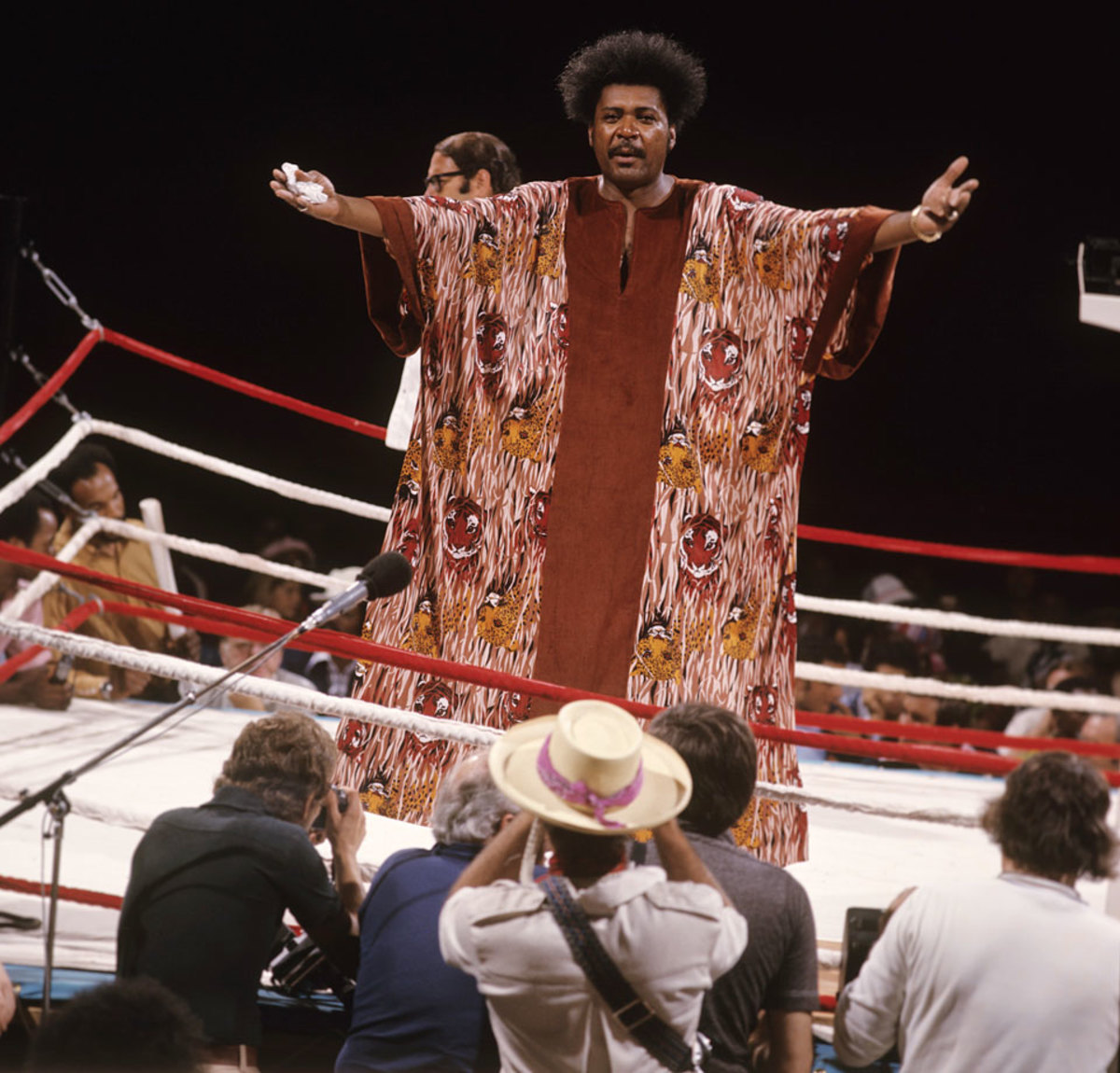
The fight was already a victory for promoter Don King, who had signed each fighter to a $5 million contract.
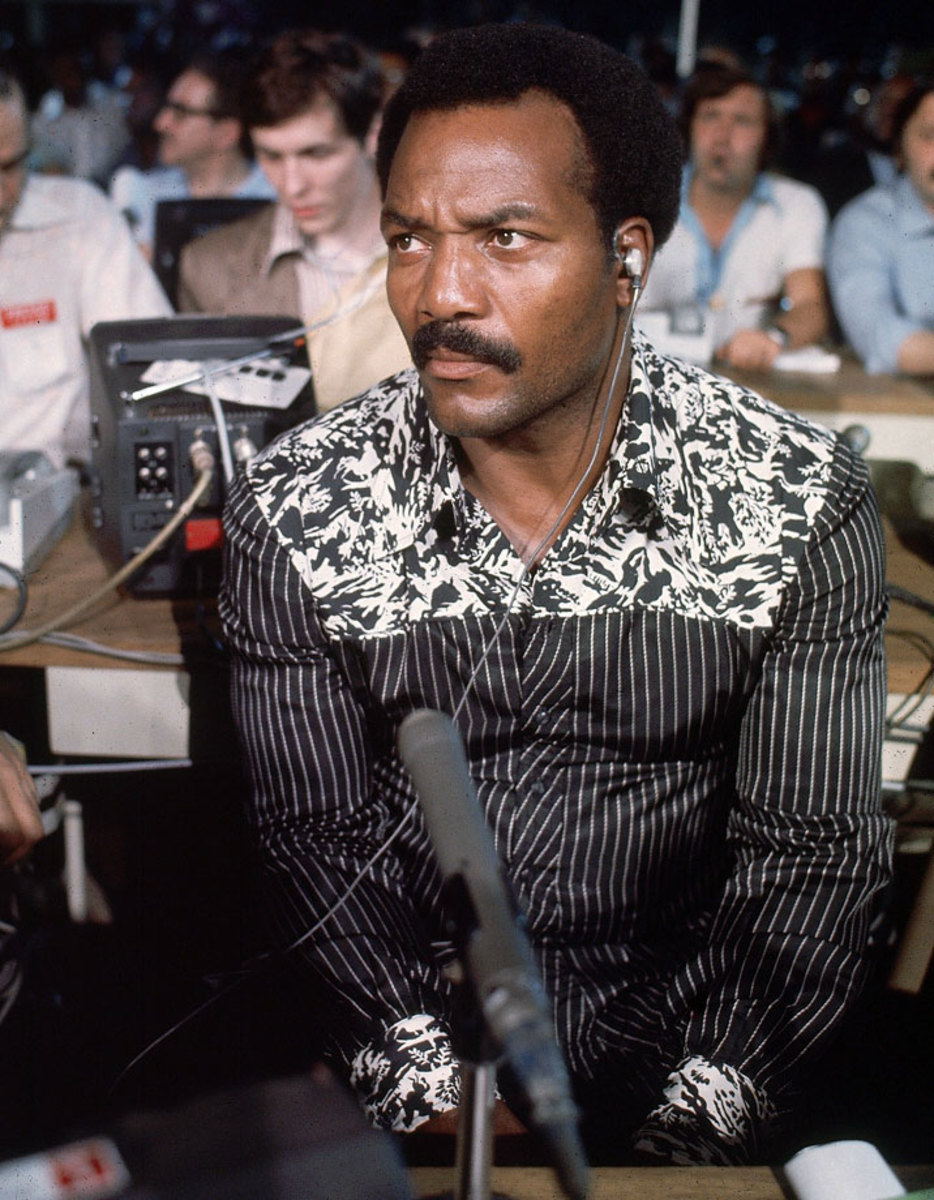
Even Hall of Fame Cleveland Browns running back Jim Brown travelled to Zaire for the big fight.
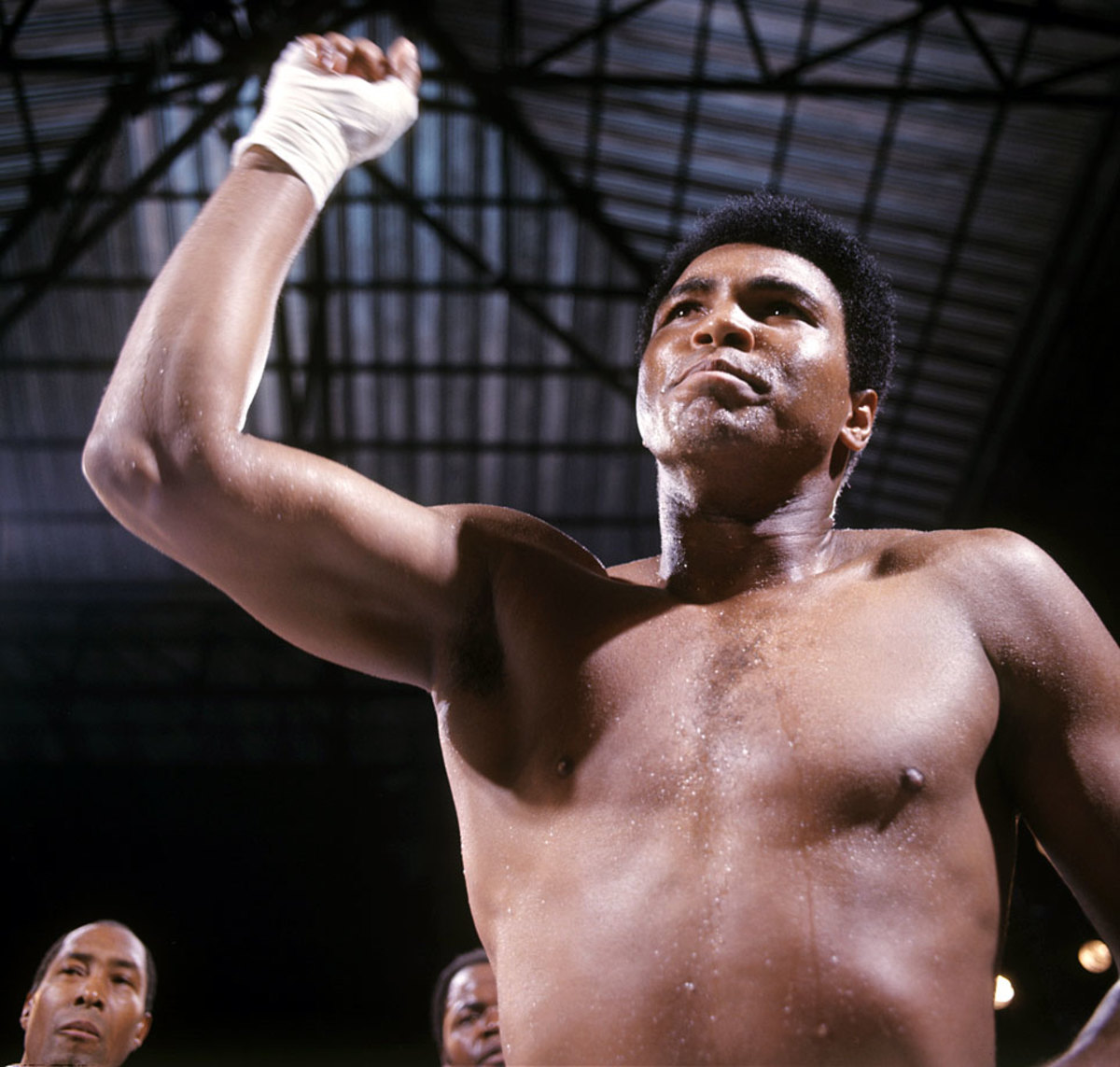
Muhammad Ali successfully courted the favor of the Zaire crowd, prompting chants of "Ali bomaye!" -- translated as "Ali, kill him!"
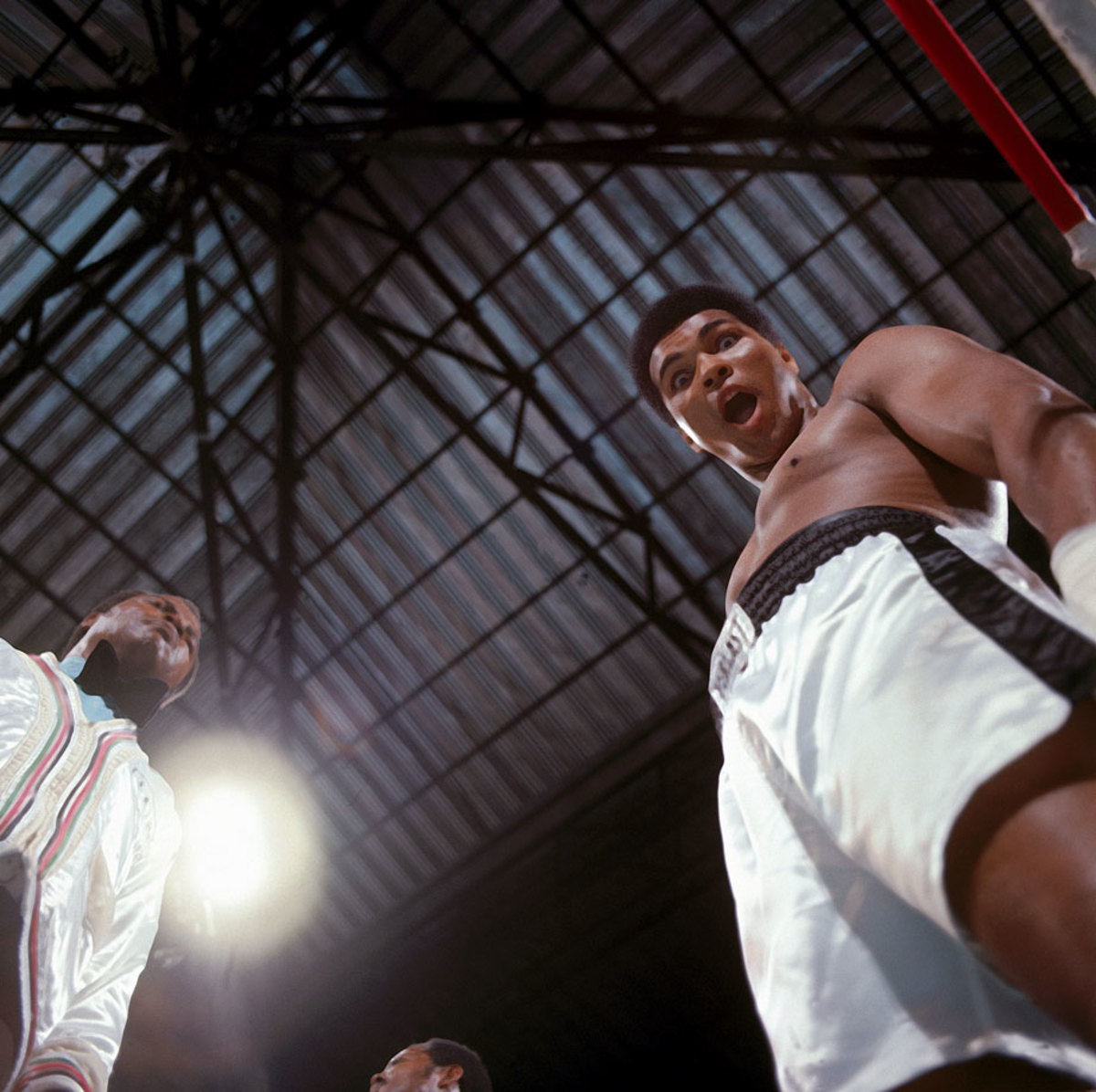
Muhammad Ali makes a face at the camera before the fight. After refusing to enter the draft in 1967, Ali was suspended from boxing for more than three years. When he returned to the ring in 1970, he claimed two victories before falling short against titleholder Joe Frazier in the "Fight of the Century" in 1971. The bout with Foreman was Ali's chance to regain the WBA and WBC belts.
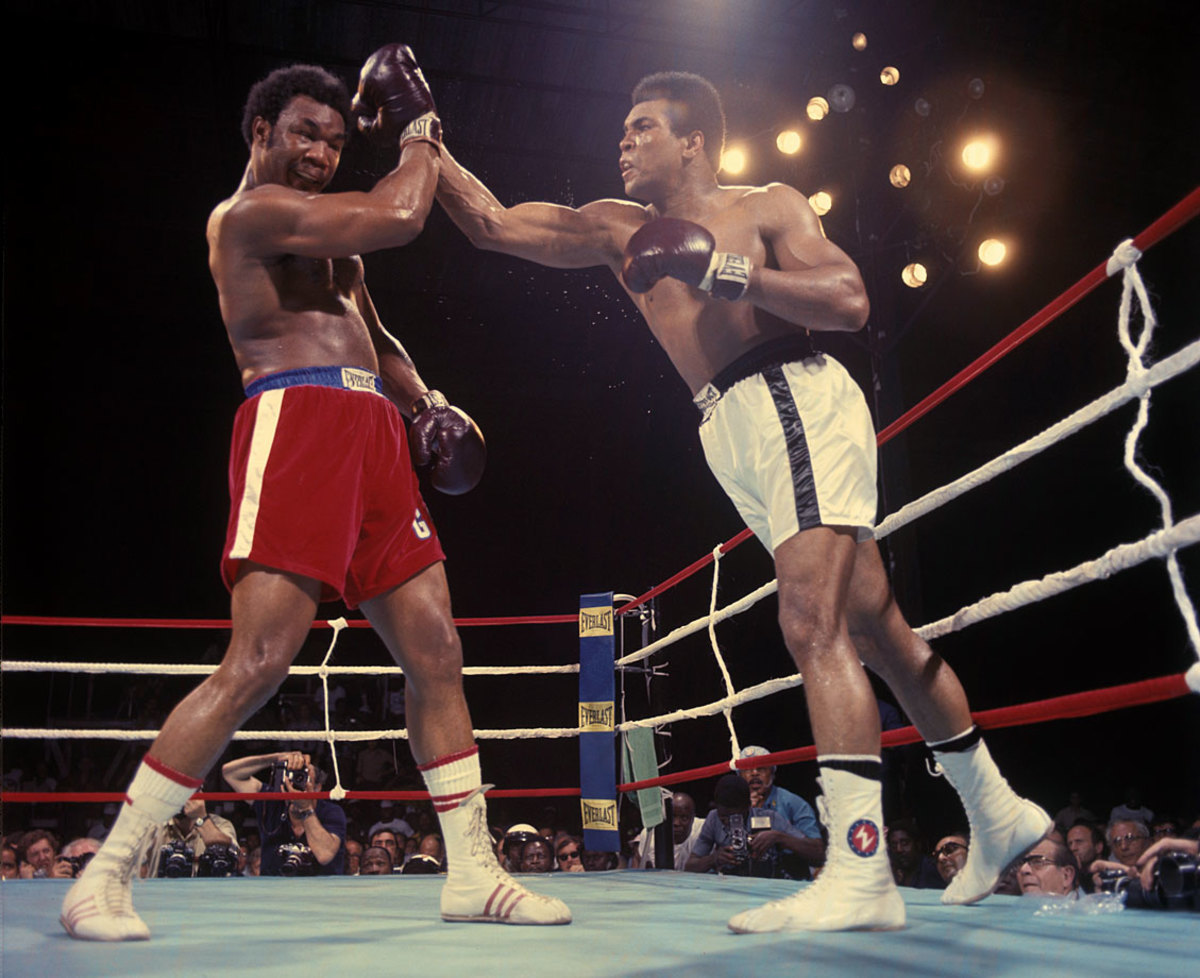
While George Foreman was known for his power, Muhammad Ali was known for his speed -- an asset he took advantage of with repeated right-hand leads in the opening round.
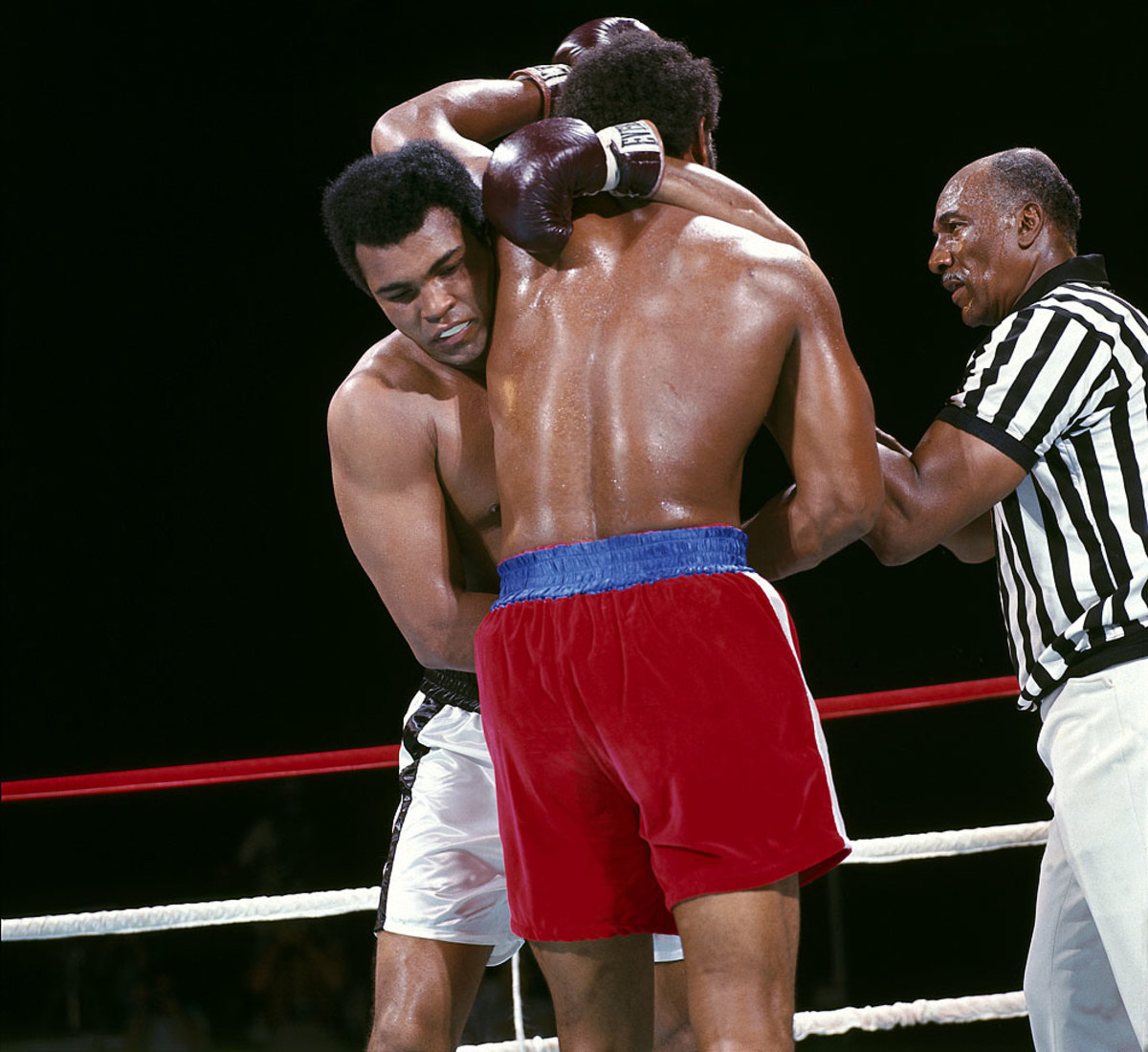
Just as he announced his plan to trainer Angelo Dundee and fans ahead of time, Muhammad Ali continued to talk during the fight, talking trash to George Foreman during every clinch.
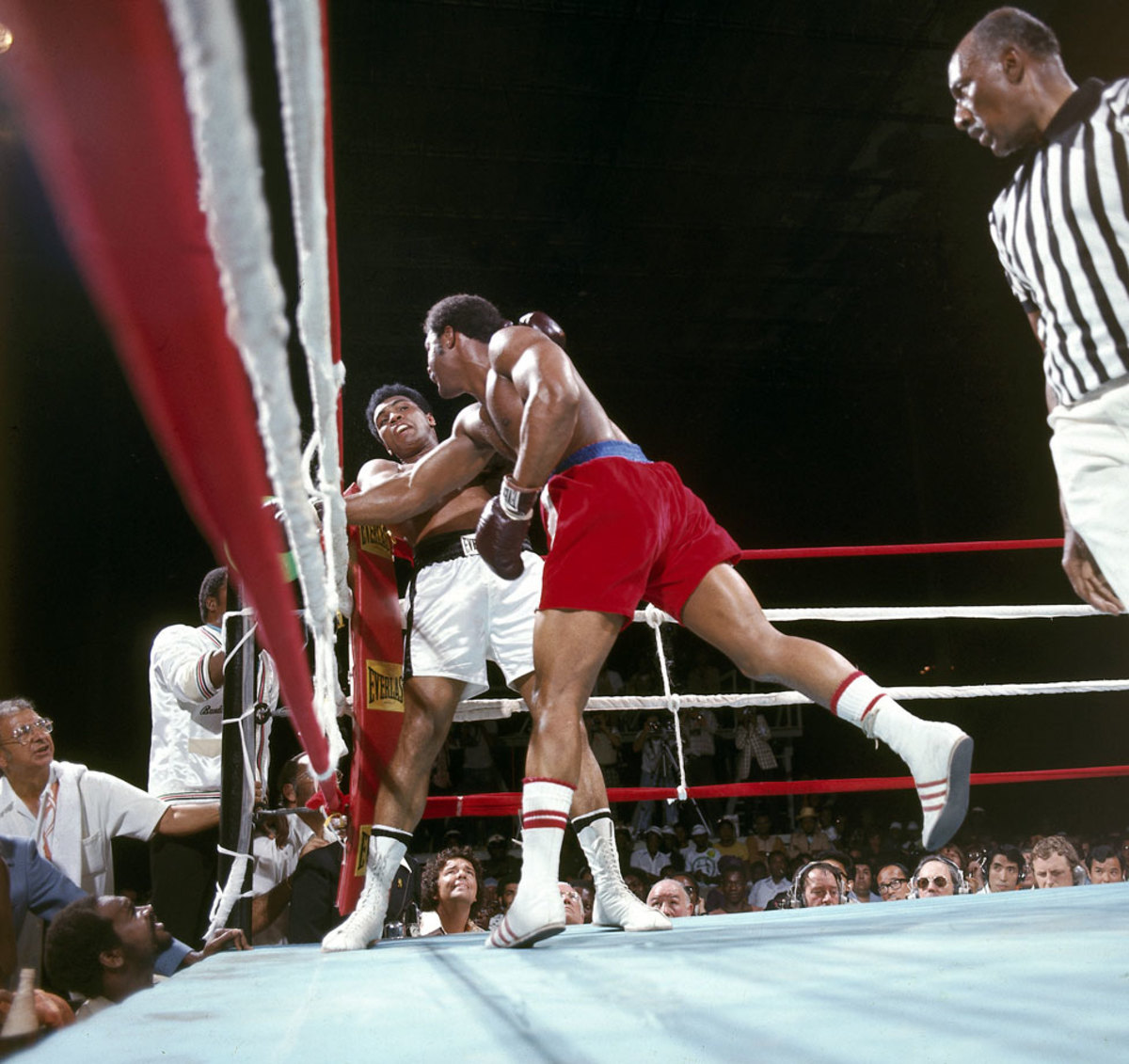
By the start of the second round, Muhammad Ali's game plan was beginning to unfold: He began lying on the ropes, where he absorbed George Foreman's punches without any counterattack. Ali latter coined his style "rope-a-dope."
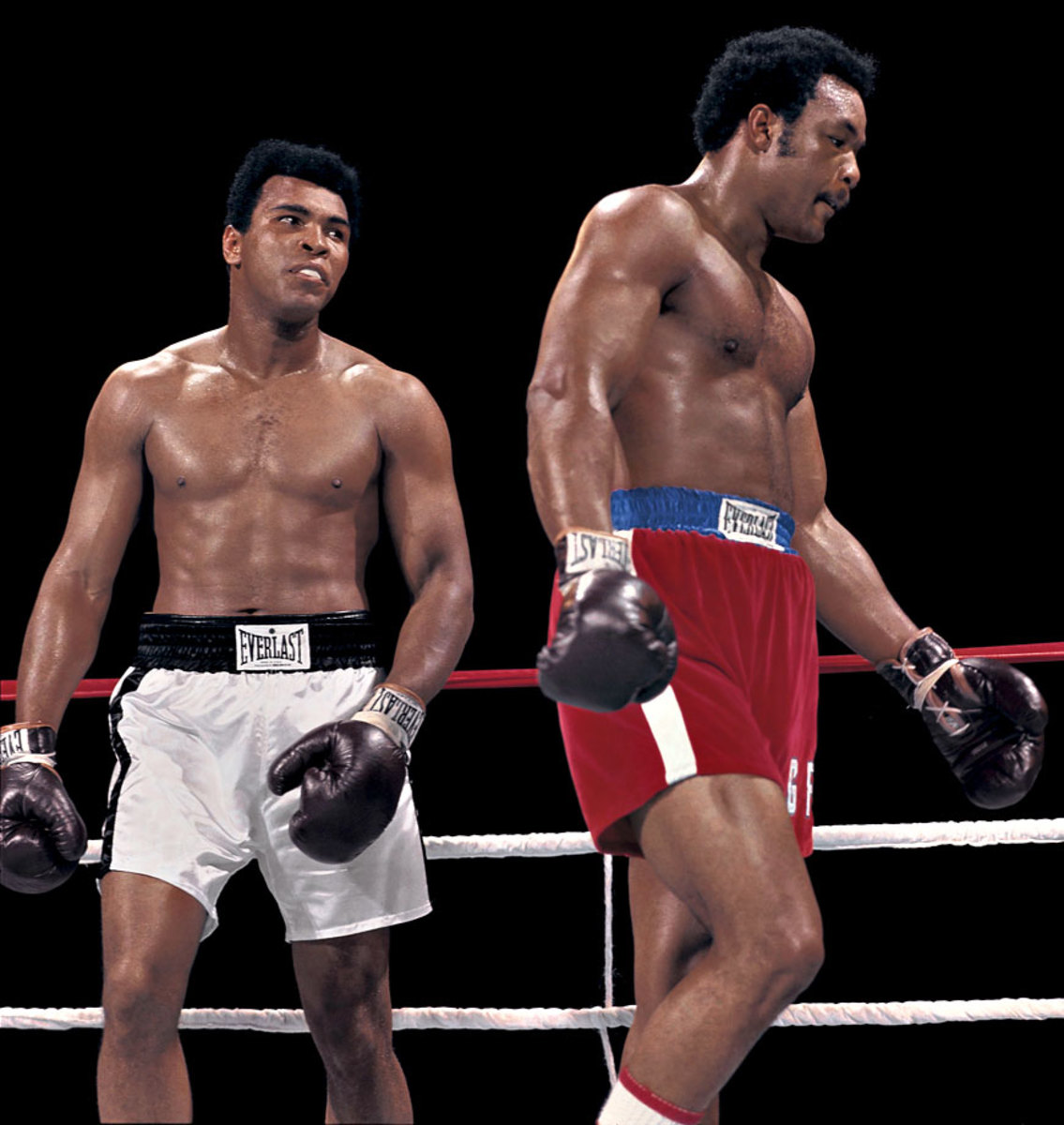
After several rounds of punching, George Foreman began to tire and Muhammad Ali capitalized on his fatigue.
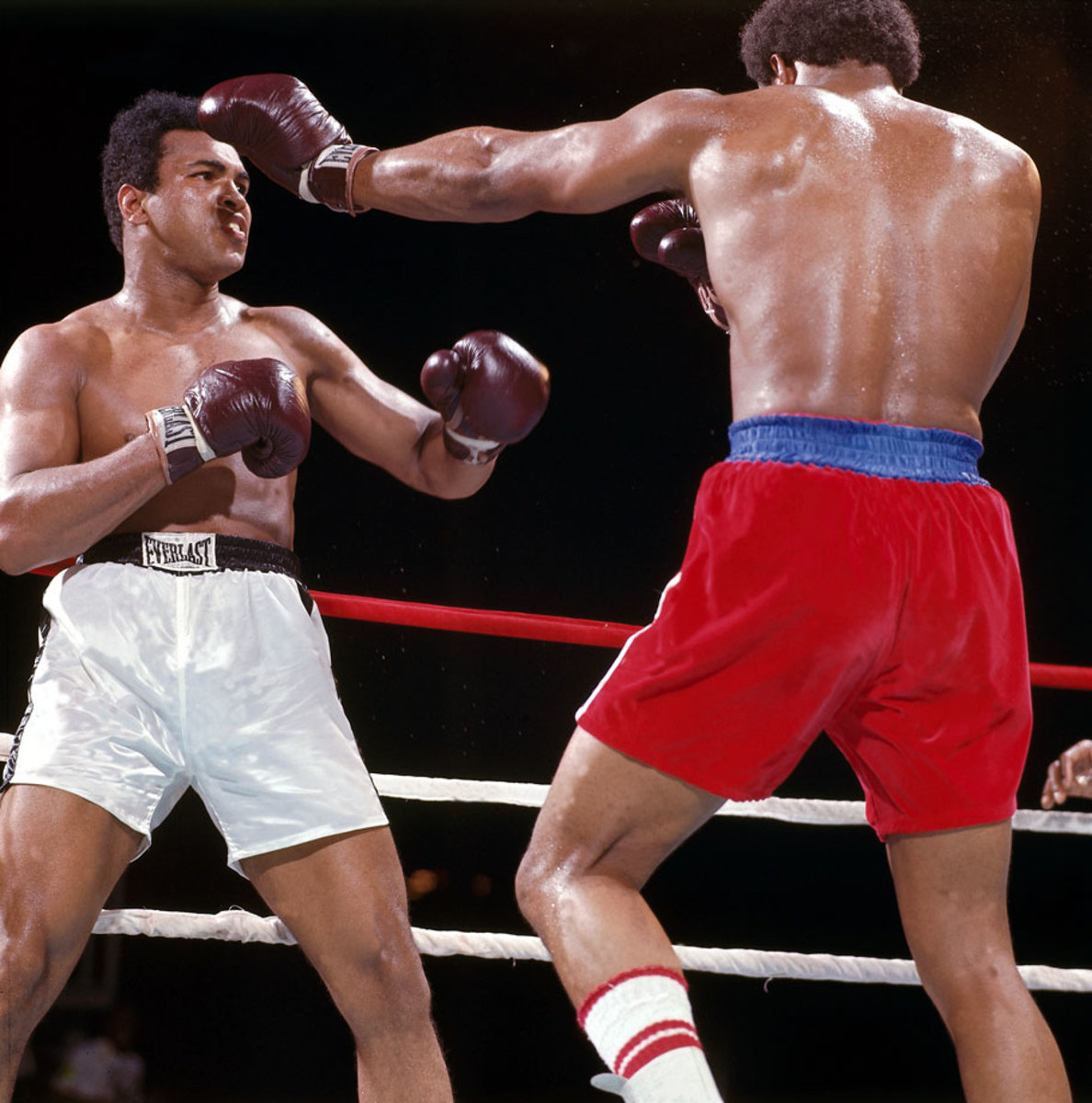
Muhammad Ali looks for his window as George Foreman tries to fend him off.
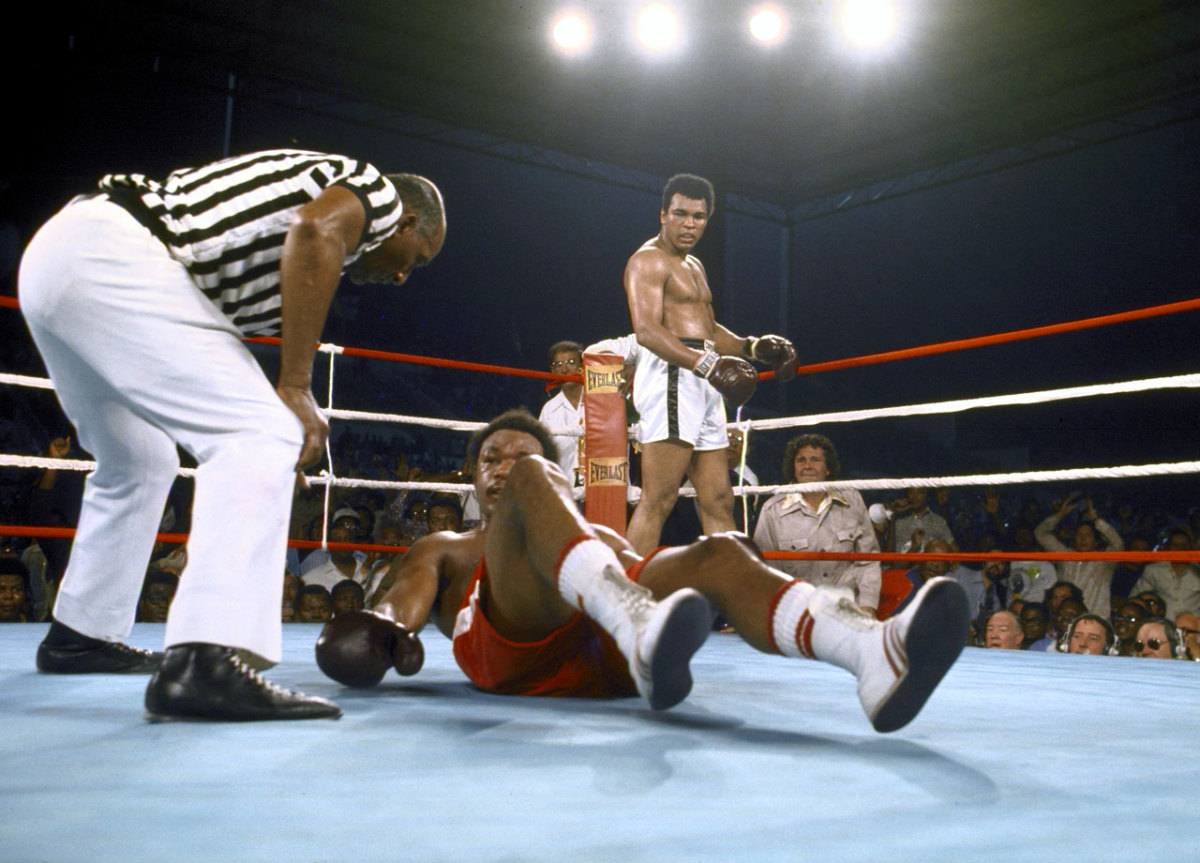
With his final combination in the eighth round, Ali delivered a left hook and a hard right to send Foreman to the canvas. That right hand proved to be it for Foreman, who swirled around the ring before landing on his back. After eight grueling rounds, Ali was named victor by knockout.
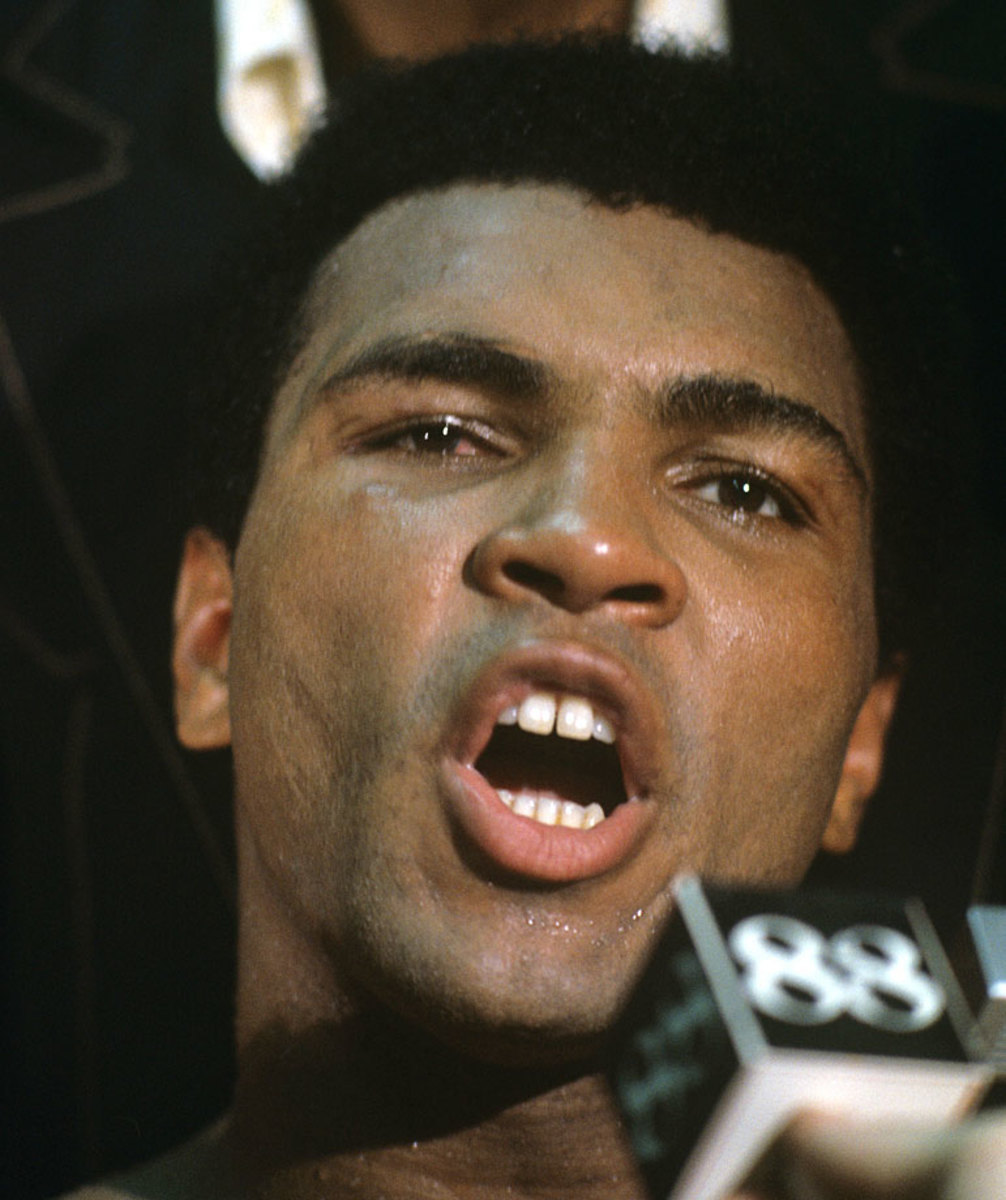
"Heavyweight champion of the world," Muhammad Ali said after the win. "It's going to take about a week to sink in."
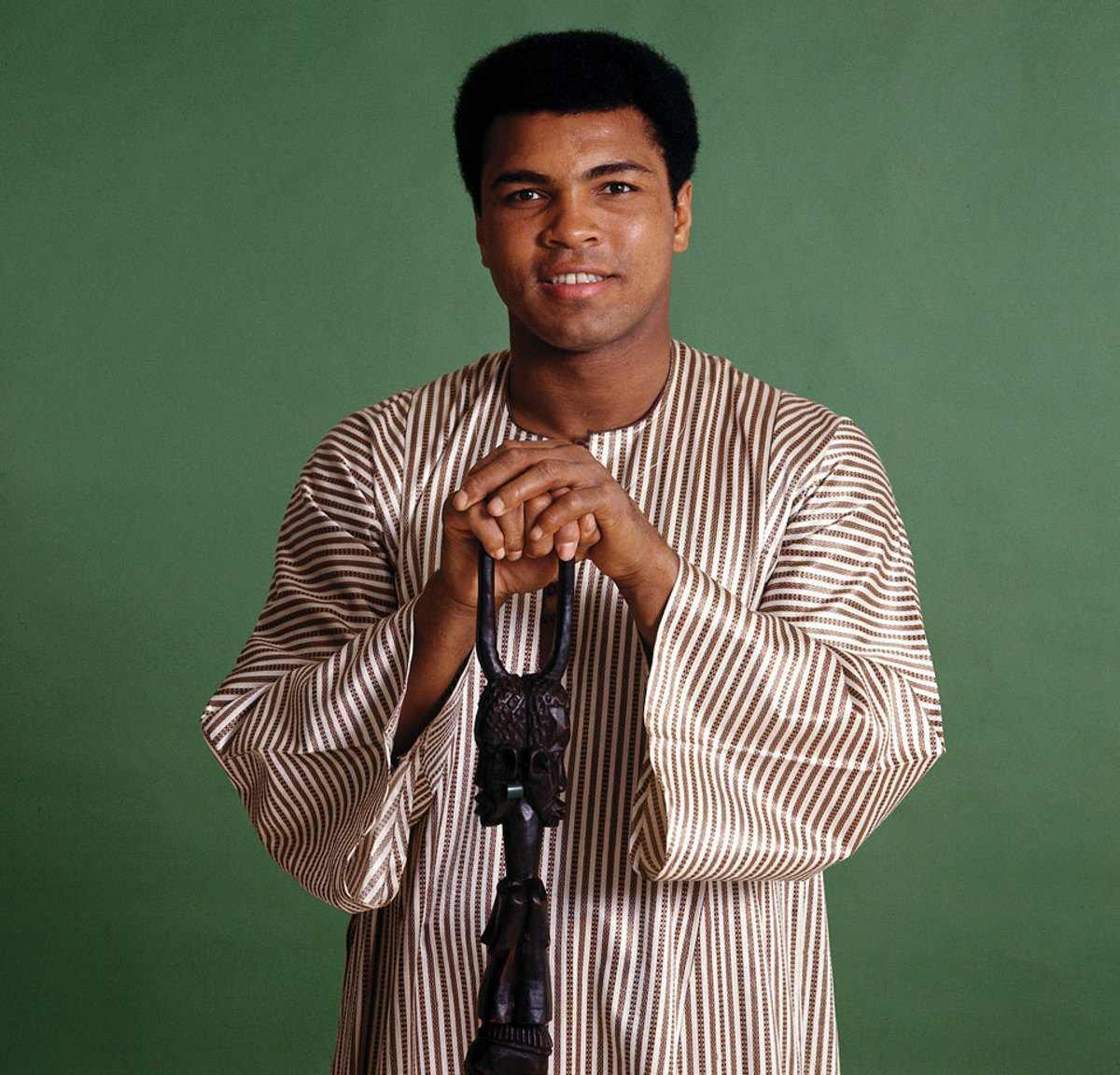
Muhammad Ali poses for a portrait after being selected as the Sports Illustrated Sportsman of the Year in 1974. Ali wore a dashiki, a men's garment widely worn in West Africa. He also brought the walking stick given to him by Zaire's president.
